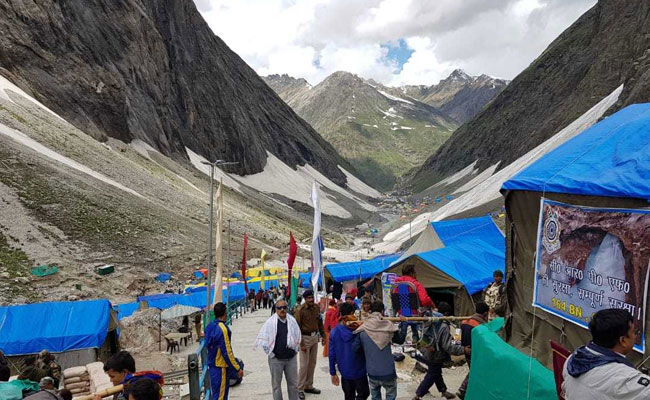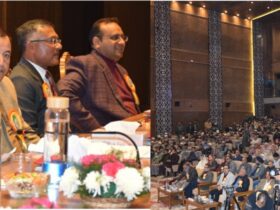Kashmir is an abode of all major religions of the world: Christianity, Islam, Hinduism and Sikhism. Irrespective of the religion, the people in the Valley have set an example of an unmatched religious and cultural harmony which in conjunction with the values therein constitute Kashmiryat.
The annual Amarnath pilgrimage revives that sense of Kashmiryat as we get to host lacs of pilgrims for nearly 60-days and make them pay their obeisance at the Holy Shrine smoothly and securely. So far, over 2.82 lakh pilgrims have paid their respect at the holy cave since June 28 this year.
“Amarnath Yatra has been going on for centuries in Kashmir. The important thing about it is Muslim families have been the main custodians,” said the Kashmir-based Journalist Rameez Makhdoomi.
“Kashmir has, for many decades, witnessed a lot of bad circumstances, hopelessness and pain.
Despite that, Amarnath yatra has, over all, run smoothly. This sends a message to the world that despite destruction and suffering, people can live in co-existence. There has to be co-existence or no-existence, and this is the message to today’s humanity,” he added.
Said to be the abode of Shiva, the pilgrims get to see the incarnation of the Hindu deity in the form of an ice stalagmite called Lingam. As described by the AmarnathJi Shrine Board website, the holy cave is situated at a height of 3,888 meters in a narrow gorge at the farther end of Lidder Valley at a distance of 46 kilometres from Pahalgam and 14 Kilometres from Baltal.
With tourism industry still struggling to find its footing after the unrest in 2016 following the killing of Hizbul Mujahideen Commander Burhan Wani on July 8, the pilgrimage offers a breather though limited. According to a report Human Rights Review published by Jammu and Kashmir Coalition of Civil Society (JKCCS), the total number of killings in 2016 was 383, including 145 civilians, 138 militants and 100 state and Central forces. This wide-scale bloodshed, the glimpses of which we continue to witness to this day, caused Kashmir a loss of 16000 crores from July 8 to November 30 in 2016, according to the Economic Survey 2016 report.
“The way the Yatra is being conducted over the years is a larger message to the tourists across the world. They should come and enjoy the beauty of Kashmir. Tourism, besides being an important sector of the Kashmir economy, is also a good source of interaction between humans. We can get to know about each other and find a way for the larger betterment of humanity,” hoped Rameez. He also said that the policy makers should not politicise tourism and Amarnath Yatra in Kashmir.


















Leave a Reply